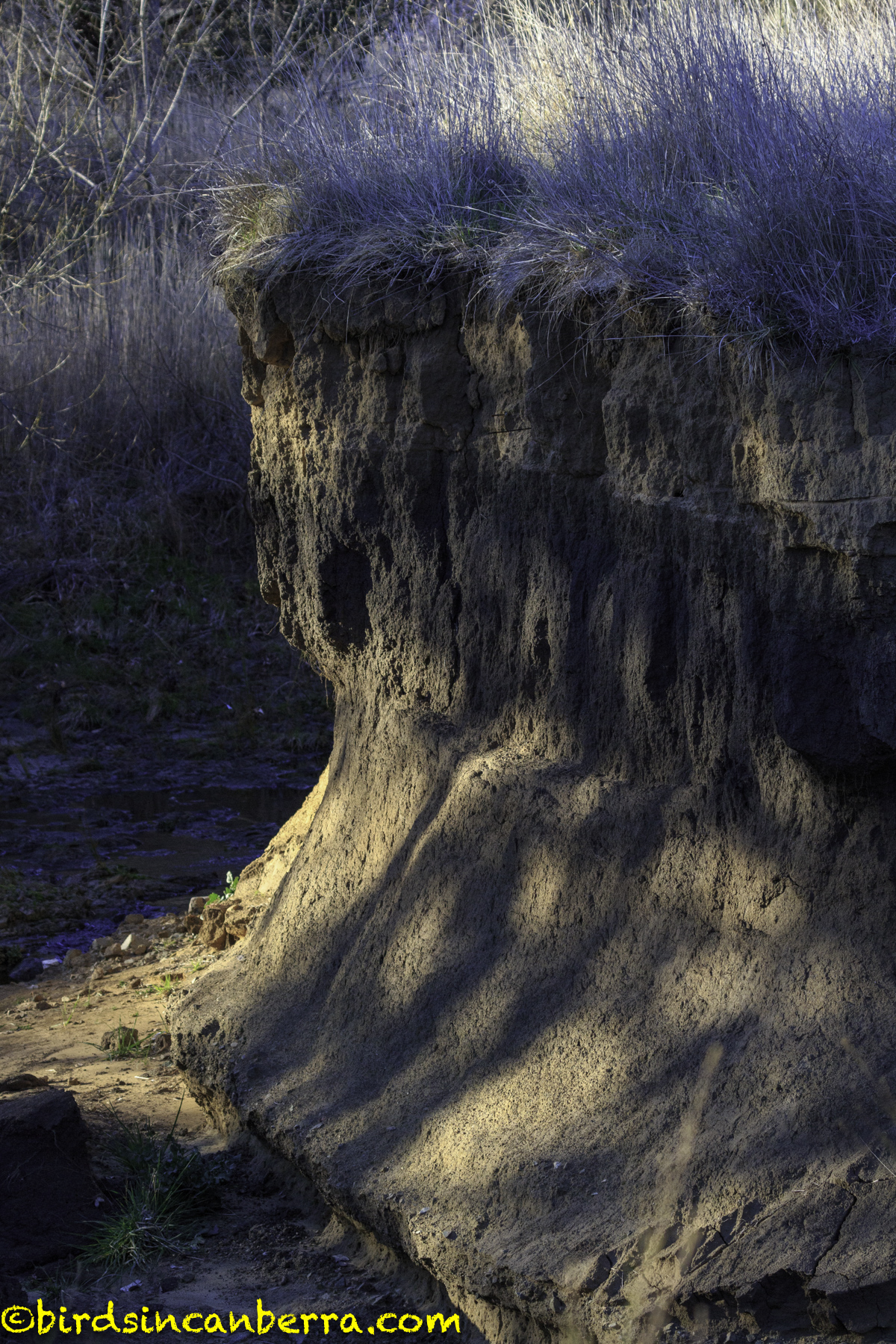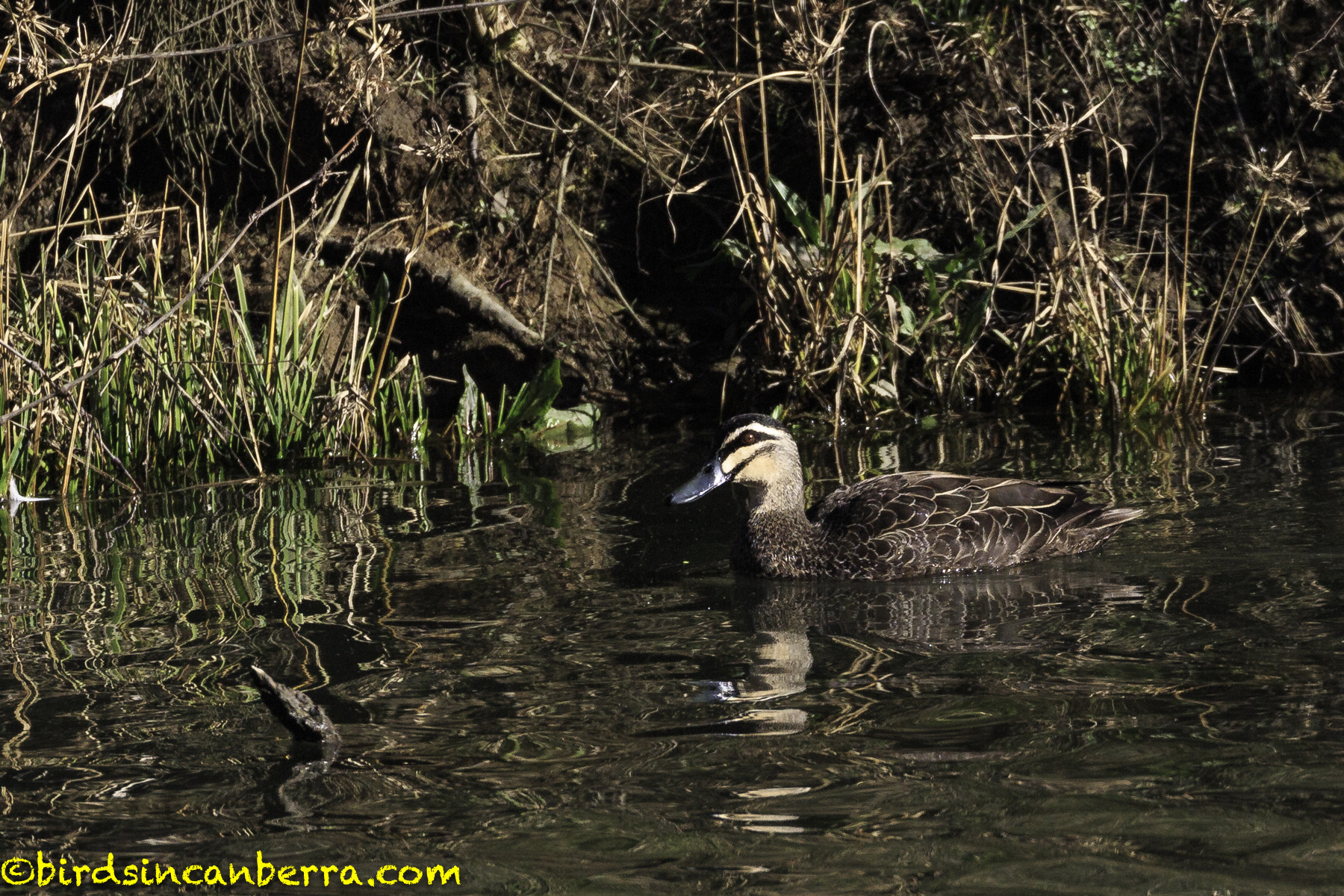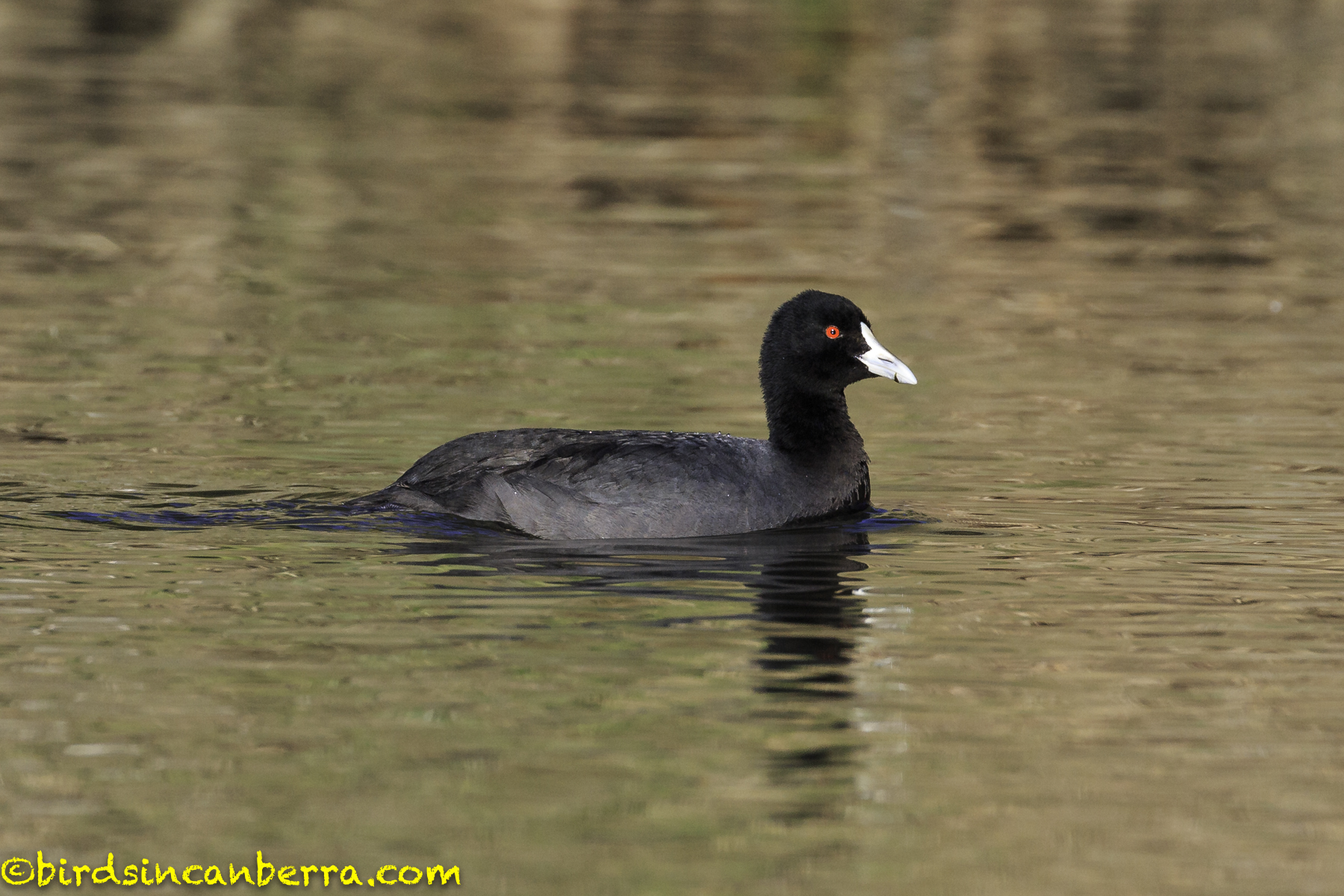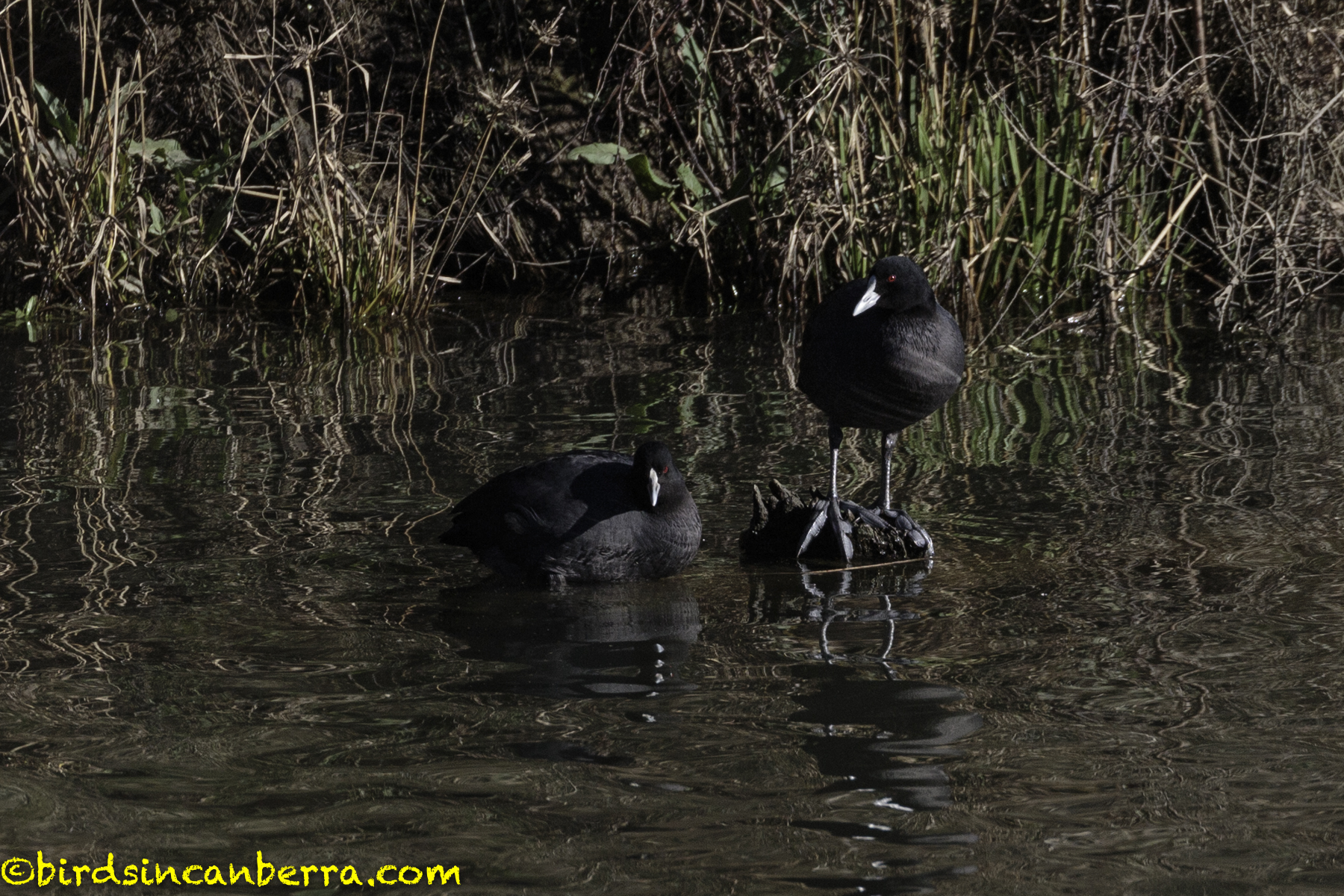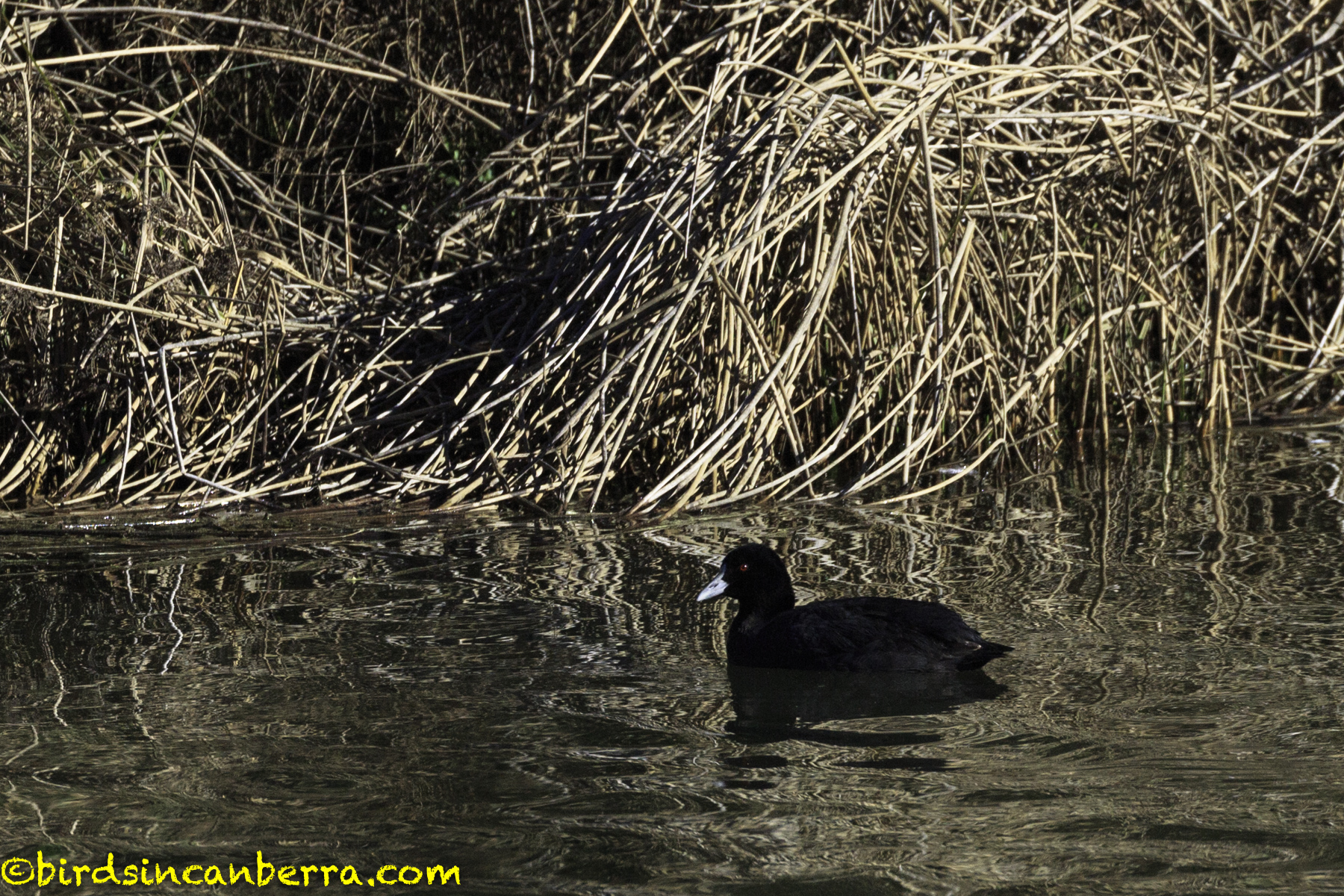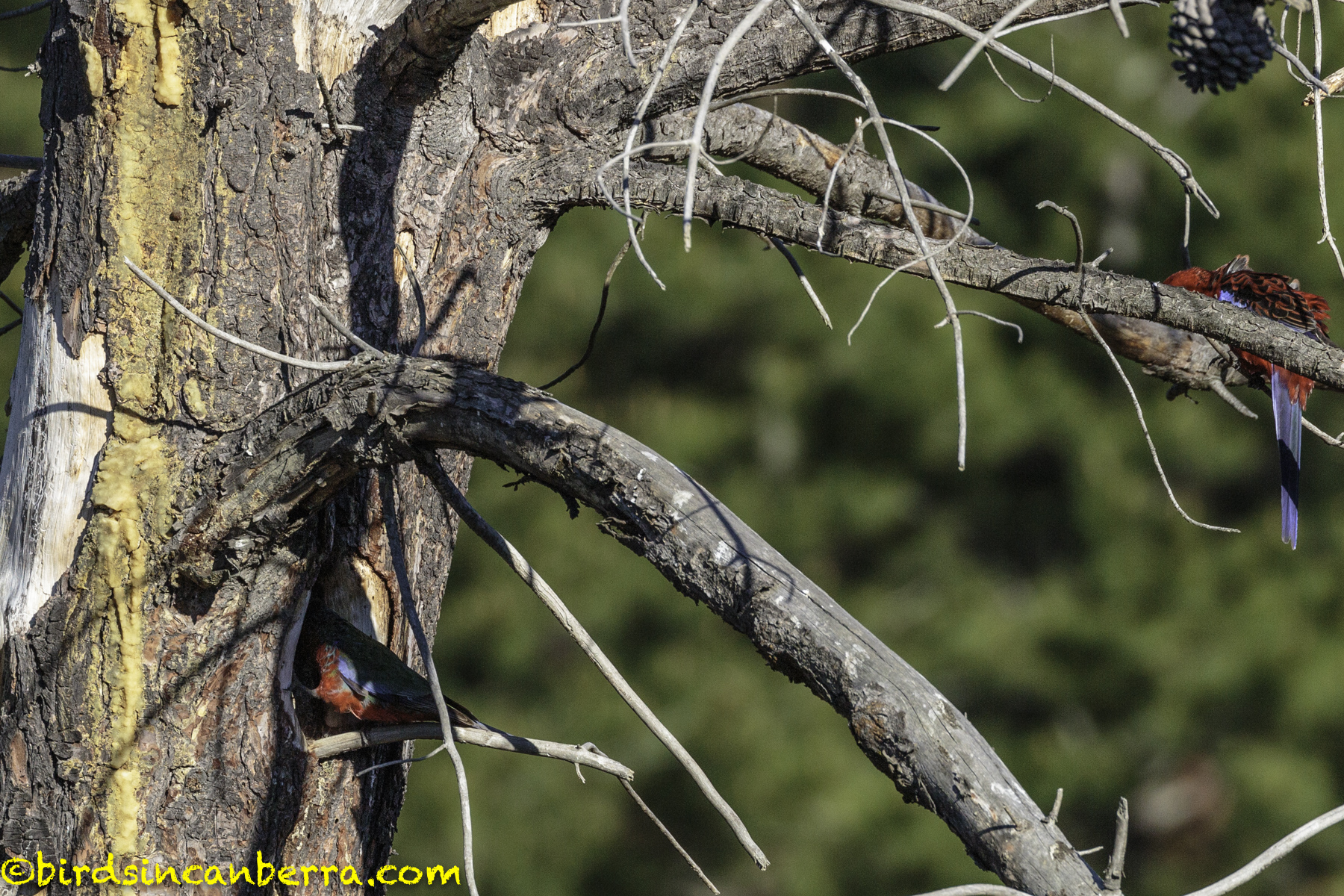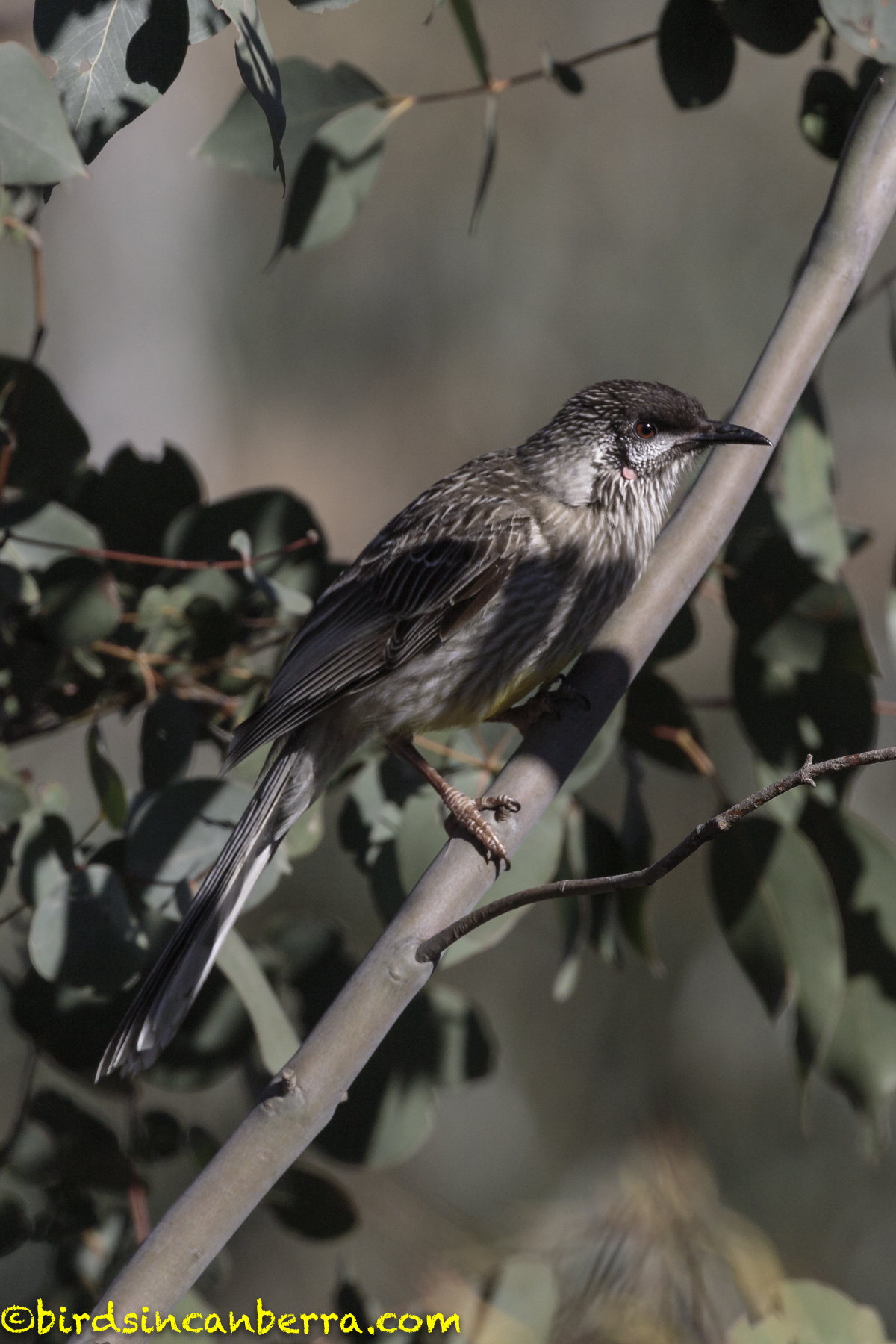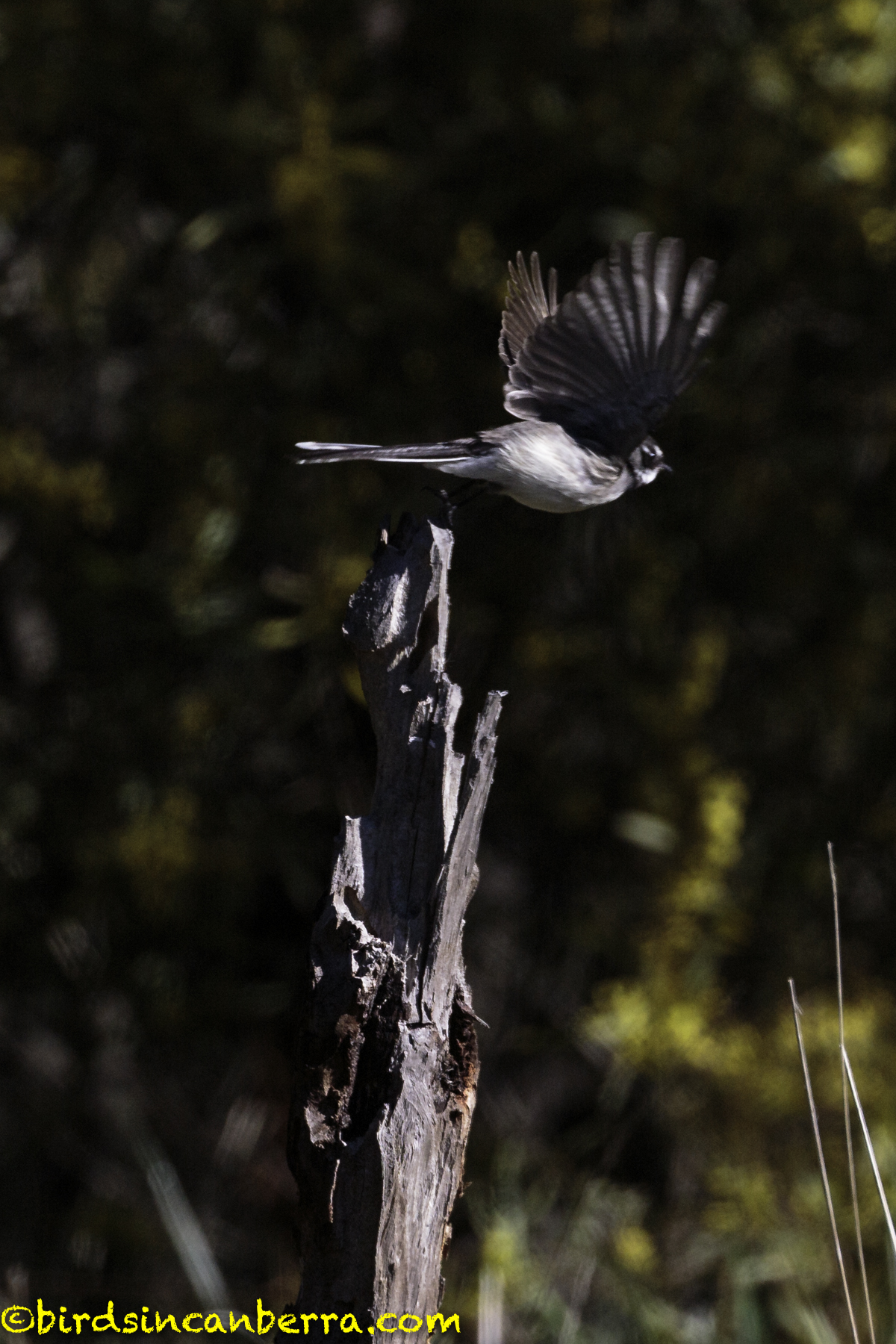I often pass by the area where the Yarralumla Creek (link 2) flows into the Molonglo River just downstream from the Scrivener Dam. I have always been intrigued by the massive amount of erosion on the banks of the Yarralumla Creek, which is more a water control canal then a true creek, although parts of it look more natural then the concrete-sided water course a lot of people will be familiar with. I am glad I went to have a closer look, while the creek is very dirty the erosion does provide a good view of the soil in the area. I was also able to see some interesting birdlife including Pacific Black Ducks, Coot, Red Wattlebirds and even a Grey Fantail. I even just enjoyed sitting on the bank at the conflux of the water systems surrounded by reeds as the sun warmed the area.
The photos below are of the west bank of the Yarralumla Creek as it curves to the west before passing under the bike path bridge ready to meet the Molonglo River. You can see how eroded the bank is but also the way the roots of the plants have penetrated far down in the soil.
There was obviously birdlife using this area as the photograph below shows with the tracks in the sand. There was also a mammal’s tracks, possibly a fox or feral cat indicating water birds are not completely safe in the relatively confined and shallow creek.
On my climb down into the creek I disturbed two Pacific Black Ducks. I do not know if they were the same two ducks I saw for the rest of the morning but I suspect if they were then they had enough of me by the time I left. This is possibly a mating pair as in the last two photographs that is likely a male in the lead because his crown appears to be black while a female’s crown is more brownish.
The other bird I saw a lot of was a pair of Eurasian Coot. There were two of them as well. Unlike the ducks, the Coots did not want to venture too far from the place in the river where they were. When I moved along the bank on the opposite side of the river the ducks left quickly while the Coots moved away slowly before circling back and seemed to stay always in the same general area.
Looking across the Molonglo River, while I was just sitting down enjoying the quiet of the water, I noticed a pair of White-browed Scrubwrens in the reeds on the opposite bank. I pushed the limits of my lens to get the photograph but I could at least identify the bird in the picture.
One of the White-browed Scrubwrens on the other side of the river
I decided to stay on the eastern bank of the Molonglo River to see what other birdlife was around. I saw a pair of Crimson Rosellas who appeared very interested in a hollow of a dead pine tree. One looked like it was getting the top part of its body inside but I could not tell how wide the hollow was on the inside. It was possible they were looking at it as a nest but one of the birds looked to still be immature so it may be they were after food. Once the birds left I took a picture of the hollow from a different angle but the shadow still made it hard to determine the depth of the hollow into the tree.
Walking up the bank on the way back to my car I noticed a pair of Red Wattlebirds flying from tree to tree. They were quiet, not making the usual call of this species. They were moving from south to north, staying a while in a tree before moving to the next one.
Fittingly, the last bird I photographed was actually also the first bird I photographed, although unsure if it was the actual same individual bird. A Grey Fantail was almost my constant companion but was not an easy bird to photograph.
Walking back to the car I passed along the perimeter fence of the Governor-General’s residence. While strolling along I came across a mass of feathers on the ground. They were mainly body plumage although there were also some possible primaries and secondaries off both wings. The feathers were possibly from an Australian King-parrot. I could not see blood or any body parts so if the bird had been killed by a creature the remains had been removed. I wondered if the feathers might have been from a bird that flew into the perimeter fence the previous day with the high winds. The feathers were still mainly in one location with very little plant matter on top of them, giving me the impression they were reasonably fresh.
Feathers from what may have been a young Australian King-parrot

